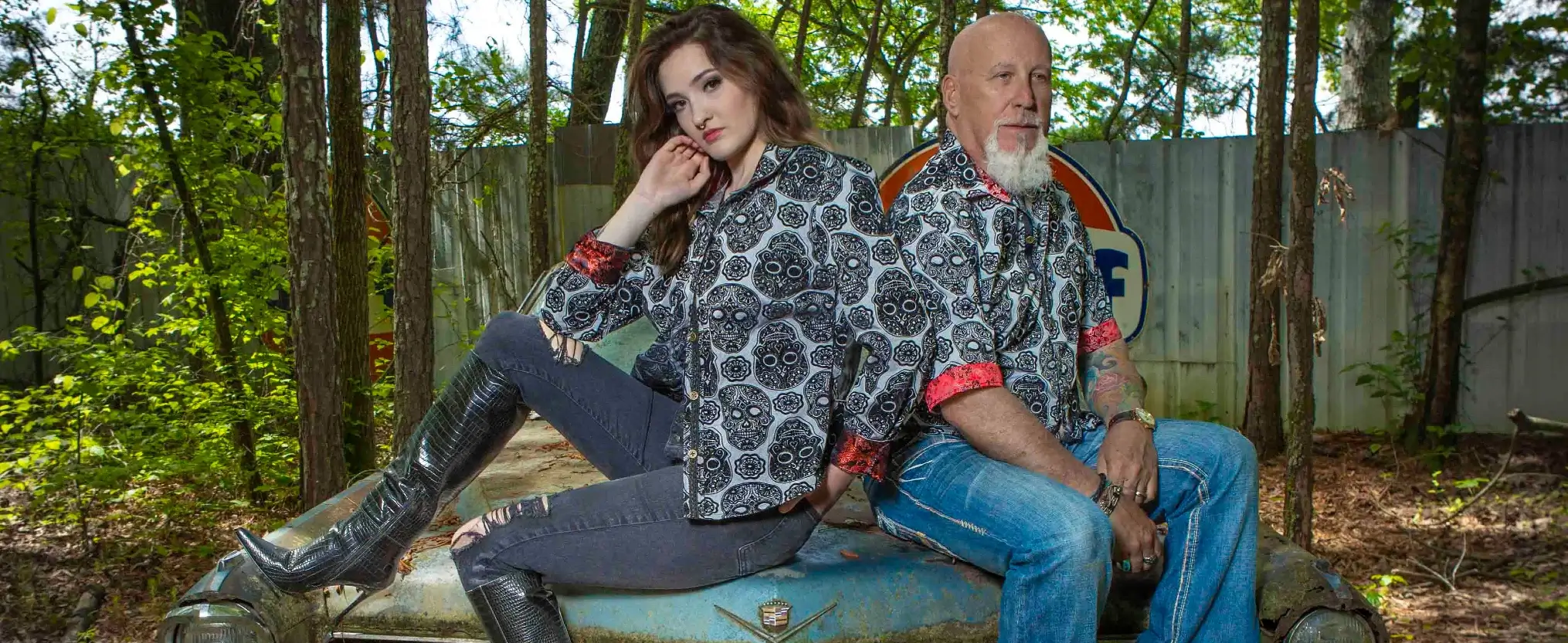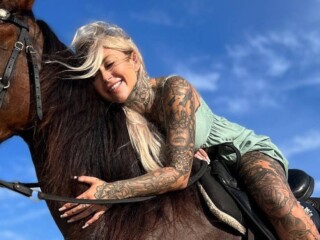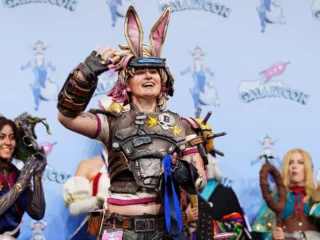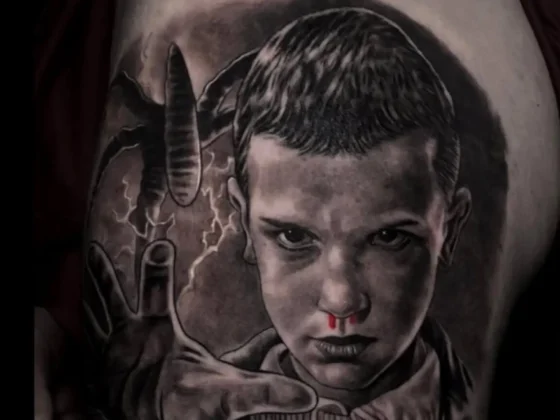Inked Mag Staff
November 17th, 2020
55 Impressive ‘Looney Tunes’ Tattoos
Take a trip back to childhood with these cartoonish tattoos.
In 1929, “Looney Tunes” conceived by Warner Bros. to compete against Walt Disney’s Mickey Mouse cartoons and to promote their music. Throughout the long running series, as well as the sister cartoon “Merrie Melodies,” Warner Bros. gave audiences some of the most beloved cartoon characters of all time—including Bugs Bunny, Marvin the Martian and Daffy Duck. Today, many children continue to watch these cartoons and many adults have grown up with them. Take a look at some of our favorite “Looney Tunes” tattoos inspired by some of the most popular characters in the gallery below and let us know your favorite cartoon from this franchise in the comments section on social media.

Bugs Bunny
Bugs Bunny is one of the most celebrated characters in the “Looney Tunes” cartoon franchise. He was first introduced in 1940 through the short film “The Wild Hare” and was originally voiced by actor Mel Blanc. Between 1940 and 1964, Bugs was depicted in over 160 cartoons and today, he’s appeared in more films that any other cartoon character.
Catchphrase: “What’s up Doc?”
Daffy Duck
Daffy Duck first appeared in 1937’s “Porky’s Duck Hunt” and since then, has become one of the most famous cartoon characters in film history. He’s regarded as one of the first screwball characters to come out of this era of cartoons and like Bugs Bunny, he was originally voiced by Mel Blanc.
Catchphrase: “Youuu’re deththpicable!”
Tweety
Another popular cartoon bird within the “Looney Tunes” franchise is Tweety, a yellow canary that first appeared in 1942’s “A Tale of Two Kitties.” Although Tweety’s gender is male, the ambiguity is played with throughout the series, as Tweety was generally marketed toward girls.
Catchphrase: “I tawt I taw a puddy tat.”
Porky Pig
Porky Pig was first introduced to audiences in 1935 through the cartoon “I Haven’t Got a Hat,” as part of the “Merrie Melodies” series. Porky Pig is best known for his signature stutter and at the end of many of the show’s shorts, he says “Th-th-th-that’s all folks!”
Catchphrase: “Th-th-th-that’s all folks!”
Yosemite Sam
One of the few humans depicted prominently throughout the “Looney Tunes” franchise, Yosemite Sam was officially introduced in 1945’s “Hare Trigger” cartoon. He’s depicted as a cowboy/prospector who’s known in the series as being an aggressive gunslinger who despises rabbits—particularly Bugs Bunny.
Catchphrase: “I’m the meanest, roughest, toughest hombre that’s ever crossed the Rio Grande – and I ain’t o namby-bamby!”
Elmer Fudd
Elmer Fudd was one of the earliest created characters in the franchise, making his official debut in 1940’s “Elmer’s Candid Camera.” He was originally marketed as Egghead and became known as the main antagonist of Bugs Bunny, aiming to hunt rabbits throughout the series.
Catchphrase: “Shhh. Be vewy vewy quiet, I’m hunting wabbits.”
Sylvester
First introduced in 1939’s “Naughty but Mice,” Sylvester is recognized as chasing around characters like Tweety and Speedy Gonzales. Three cartoons featuring Sylvester went on to win three Academy Awards, the most of any other “Looney Tunes” character. His official full name is Sylvester James Pussycat Sr.
Catchphrase: “Sufferin’ succotash!”

Foghorn Leghorn
Foghorn Leghorn was first introduced in the 1946 cartoon “Walky Talky Hawky” and was created by animator Robert McKimson. He was inspired by a radio character named Senator Claghorn, who was played by Kenny Delmar on “The Fred Allen Show.”
Catchphrase: “That’s a joke, son!”
Marvin the Martian
Unlike other “Looney Tunes” characters who are based on animals or humans, Marvin the Martian is an extraterrestrial. He was introduced in 1948’s “Haredevil Hare” as an antagonist to Bugs Bunny and is known for his signature uniform, which takes inspiration from the Hoplite style of armor worn by Ancient Greek soldiers.
Catchphrase: “Where’s the kaboom”
Tasmanian Devil
The Tasmanian Devil, often referred to as Taz, first appeared in 1954’s “Devil May Hare.” He gained larger recognition during the 1990s after appearing in his own show “Taz-Mania”, becoming one of the franchise’s most popular characters.
Pepé Le Pew
Pepé Le Pew was first introduced to “Looney Tunes” during 1945, through the cartoon “Odar-able Kitty.” Throughout the franchise, Le Pew is known as a French skunk in constant romantic pursuit of a black and white cat named Penelope Pussycat.
Catchphrase: “Permit me to introduce myself. I am Pepé Le Pew, your lover.”

Speedy Gonzales
Officially introduced in 1955’s “Speedy Gonzales,” this cartoon character was known as The Fastest Mouse in Mexico. Speedy Gonzales is known for his impressive speed (which he uses to evade Sylvester), as well as his exaggerated Mexican accent.
Catchphrase: “arriba, arriba … andale, andale”
Wile E. Coyote and the Road Runner
First introduced in the 1949 cartoon “Fast and Furry-ous,” Wile E. Coyote and the Road Runner are “Looney Tune’s” most recognizable duo. In most cartoons, the Coyote attempts to catch and eat the Road Runner, who’s a fast-running ground bird.
Catchphrase: “Beep Beep!”
Editor's Picks
Bridging Classical Art and Modern Tattooing
Esteban Rodriguez brings the discipline of classical fine art to the living canvas of skin, creating hyper-realistic tattoos that merge technical mastery with emotional depth.
Show Your Ink Fashions Brings Custom Style to Tattoo Culture
Show Your Ink Fashions creates custom shirts designed to showcase your tattoos as wearable art, blending fashion with personal expression.
The Ultimate “Superman” Tattoo Roundup: Just in Time for Superman’s Return to Screens
With Superman’s big return to theaters, fans are revisiting some of the most iconic ink inspired by the Man of Steel.














